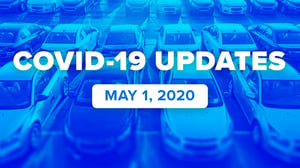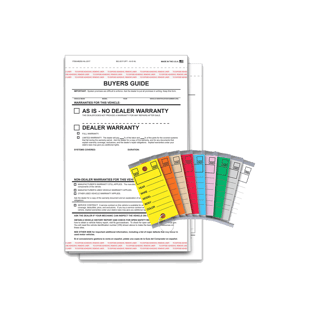
COVID-19 Updates: May 1, 2020
As we continue to navigate our way through the COVID-19 pandemic, one thing is for certain — the NHADA is committed to keeping our members informed through continued resources, newsletters, and webinars; like the one we concluded today.
PARTNER SPOTLIGHT
Dealer Management System, Computer Technology, Media/Advertising, Automotive Auction, F & I/Aftermarket Products, Automotive Technology Training & Compliance
 A NHADA Gold PARTNER
A NHADA Gold PARTNERComputer Technology, Automotive Shop Equipment, Environmental Services
 A NHADA Platinum PARTNER
A NHADA Platinum PARTNERF & I/Aftermarket Products, Automotive Technology Training & Compliance, Environmental Services
.png?width=150&name=corp_logo_horz_on_light_with_trademark_symbol_1200w%20(002).png) A NHADA Diamond PARTNER
A NHADA Diamond PARTNERF & I/Aftermarket Products, Financial Services, Automotive Technology Training & Compliance
 A NHADA Diamond PARTNER
A NHADA Diamond PARTNER
[WEBINAR] You Have Your PPP Loan...Now What?
The following is another update from our partner Albin, Randall & Bennett about significant developments with the PPP:
- Late yesterday, the IRS issued Notice 2020-32. In this notice, the IRS outlines that any expenses associated with loan forgiveness under the CARES Act Section 1106 (ie: covered payroll costs, rent, utilities, etc.) are not deductible for income tax purposes. This converts loan forgiveness from a non-taxable event into a taxable event. Hopefully, Congress intervenes and clarifies that forgiveness was not intended to be taxable.
- Yesterday, Treasury and the SBA issued the 7th Interim Final Rule. This Rule limits the total amount of loans available to any corporate groups at $20,000,000
- Earlier in the week, Treasury and SBA issued the 5th and 6th Interim Final Rules. These rules provided some clarification on the disbursement of funds and the start of the 8 week period. It confirmed what we already thought – all the funds must be disbursed at one time, within ten calendar days of loan approval and the 8 weeks starts on the disbursement date. They also provided relief to certain seasonal employers by allowing them to base their loan amount on any 12 week period between May 1 and Sept 15, 2019. However they did not address the fact that the 8 weeks for forgiveness may not line up with the higher payroll months on which the loan was based.
- Finally. SBA and the Treasury have issued several new FAQs this week. Most speak to the bad publicity that the program has gotten in the press with larger, apparently well capitalized companies getting loans and the meaning of the self-certification statement. The SBA has announced it will review the files of any loan over $2,000,000. They also issued an FAQ that indicates that a company that has had an ownership change post 2/15/20 might still be eligible for a loan even if that ownership change was in the form of an asset sale. We had previously thought that the new company would not have been considered to be in business on 2/15 but this provides a clarification that the new company can use the payroll records and FTE data of the old company in this case.
All the Interim Final Rules and FAQs can be found here:
https://home.treasury.gov/policy-issues/cares/assistance-for-small-businesses
Our website is also a great source of information. https://www.arbcpa.com/
UPDATES from NADA and Info from the IRS & Treasury
- NADA’s analysis addressing PPP loan eligibility for businesses owned by large companies. This comes as the SBA now requires borrowers to certify that they need the money; SBA guidance states “Large companies with adequate sources of liquidity to support the business’ ongoing operations … must certify in good faith that their PPP loan request is necessary.”
- NADA’s detailed analysis of Use and Forgiveness of PPP Loans, which provides guidance to dealers for how they can use the proceeds from the loan; where they can apply them; and to what extent the loan can be forgiven. Please note that, as the document stresses, the information does not reflect the additional guidance NADA expects to obtain from SBA/Treasury, which will be circulated as soon as it is received.
- The updated version of NADA’s CARES Act FAQs, which address new elements of the Paycheck Protection Program (updated yesterday, April 30).
- The attached IRS notice (https://www.irs.gov/pub/irs-drop/n-20-32.pdf), which was released yesterday, explaining that forgiven PPP loan expenses that are excluded from income under the CARES Act may not be deducted for federal income tax purposes. Please also see the IRS’s ERTC FAQ at https://www.irs.gov/newsroom/faqs-employee-retention-credit-under-the-cares-act.
- Additional guidance from the Treasury Department and Small Business Administration for PPP’s review procedure, final rule on disbursements, and more:
- Top-line Overview of PPP and the SBA’s Paycheck Protection Program Loan Report.
- Treasury Department’s updated Paycheck Protection Program Loans: Frequently Asked Questions for borrowers and lenders.
----
The Federal Reserve Board (FRB) announced several favorable changes to its Main Street Lending Program (MSLP), which was developed under the CARES Act to help provide small- and medium-size businesses additional liquidity to respond to the pandemic. The program as initially announced precluded Main Street Loan recipients from paying dividends or other capital distributions for any purpose for up to 12 months after the loan is outstanding. In comments to the FRB, NADA explained that this broad restriction would unnecessarily preclude pass-through entities from paying dividends to satisfy shareholder tax obligations. In response, the FRB changed this limitation to provide that “an S corporation or other tax pass-through entity that is an Eligible Borrower may make distributions to the extent reasonably required to cover its owners’ tax obligations in respect of the entity’s earnings.” This essential change removes an element of the MSLP that would have precluded dealers from considering it as a viable means to enhance their liquidity. Dealers who receive a loan through the Paycheck Protection Program are eligible for an MSLP loan if they otherwise qualify. Dealers are encouraged to review the FRB’s revised term sheets for its various MSLP lending facilities as well as the frequently asked questions it issued yesterday to explain the program in greater detail.
The IRS released FAQs on Employee Retention Tax Credit under the CARES Act. The tax credit is fully refundable for employers, equal to 50% of qualified wages that eligible employers pay their employees. The maximum amount of qualified wages per employee is $10,000, so that the maximum credit for qualified wages paid to any employee is $5,000. Please note: employers who have received loans through the PPP are not eligible to benefit from the Employee Retention Tax Credit.
As always, please use our COVID-19 Hub as a resource as we continue to navigate through this pandemic.


















.png?width=150&name=Ally_Final%20Logos%20and%20Pairings_11.14.2018-01%20(2).png)


-2.png?width=150&name=Wipfli%20Logo%20Blue%20RGB%20(1)-2.png)


.jpg?width=150&name=NHADA_Partner_FTR_Img_NHADA_Insurance%20(1).jpg)


.jpg?width=150&name=NHADA_Partner_FTR_Img_JMA(1).jpg)






